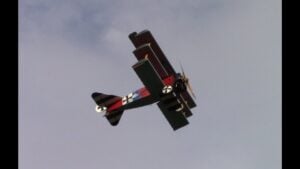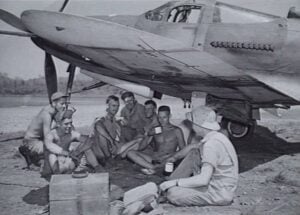How Japan’s WWII ‘Betty’ Bomber Became Doomed From the Start

Naval History & Heritage Command, Public domain, via Wikimedia Commons
A Design Born From Ambition
When Japan’s Mitsubishi G4M took to the skies in 1941, it was hailed as a technological triumph. Sleek, fast, and capable of flying extraordinary distances without refueling, the twin-engine bomber appeared to meet the Imperial Japanese Navy’s demand for a long-range attack aircraft. In an era when most bombers needed to operate from large airfields or nearby carriers, the G4M offered something radical — the ability to strike targets thousands of miles away and return home without support.
But behind that impressive range was a dangerous compromise. The G4M’s design philosophy placed range and speed above all else, leading engineers to cut away nearly every protective feature that might have saved its crew in combat. This choice would later earn the aircraft grim nicknames among Allied pilots, who called it “The Flying Lighter” or “The One-Shot Lighter,” a cruel reference to its tendency to burst into flames when hit.

The Weight of Dangerous Choices
To meet the Navy’s strict range requirements, engineers had to make the bomber as light as possible. The first sacrifice was safety. Unlike many Allied bombers, the G4M had no self-sealing fuel tanks. These specialized tanks, which expanded to contain leaks when punctured, were standard on American aircraft like the B-17 and B-25. The G4M’s massive fuel tanks, placed inside its wings, saved weight but made it extremely flammable. A single tracer bullet could ignite the fuel, turning the aircraft into a fireball mid-air.
Another crucial omission was armor plating. The crew, engines, and vital systems were left unprotected to preserve speed and endurance. In combat, this meant that even light machine gun fire could cut through the fuselage or disable the engines. Survivors often recalled the terrifying sight of flames spreading from wing to wing, forcing them to bail out over open sea — if they were lucky enough to escape at all.
Fragile Speed
The G4M’s airframe was also built with light materials that offered little structural strength. While this made the bomber nimble and efficient in calm flight, it also made it fragile under enemy fire. Sustained hits could tear off control surfaces or cause the wings to snap. Compared to American heavy bombers, which were built to absorb significant damage and still fly home, the G4M was alarmingly fragile. Crews understood that being assigned to one often meant flying a one-way mission.
Although the G4M carried a 20mm cannon in its tail for defense — a powerful weapon for its class — this single advantage could not offset its weaknesses. Once Allied fighters caught sight of a G4M formation, the results were often disastrous. The bomber’s light frame could not withstand multiple attacks, and even minor hits tended to ignite its fuel tanks.

The Harsh Reality of Combat
At the start of the Pacific War, the G4M achieved several impressive victories. Its long range allowed Japan to strike at distant targets that were thought to be out of reach. The aircraft played a central role in the sinking of two major British warships, the HMS Prince of Wales and HMS Repulse, off the coast of Malaya in December 1941. These early successes made the bomber seem unstoppable.
However, as the war went on, the balance shifted. Allied forces introduced faster fighters with better armament and tactics. American aircraft such as the P-38 Lightning and F6F Hellcat could easily intercept the G4M, and once engaged, the Japanese crews had little chance of survival. Missions that once ended in triumph soon became suicide runs.
A Legacy of Loss
Despite its early promise, the G4M became one of the most vulnerable bombers of the war. Its design, though innovative on paper, reflected a tragic misjudgment — valuing reach over resilience. For the crews who flew it, bravery was not a choice but a necessity, as they faced overwhelming odds in a machine that offered them almost no protection. By the final years of the war, the G4M’s once-feared reputation had turned into a symbol of sacrifice and flawed ambition, a reminder of how engineering priorities can decide the fate of those who fly.




















